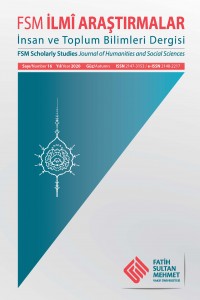Öz
Camili Havzasının geleneksel mimarisi, bölgenin iklim koşulları, topografik yapısı,
yerel malzeme olanakları çerçevesinde alınabilecek mimari kararların ve uygulamaların
başarılı örneklerini içermekte, bölge insanının, doğa ve çevresi ile ilişkilerini yansıtmaktadır.
Havzanın geleneksel mimarisi yapım sistemi ahşap yığmadır. Bölgede bu yapım
tekniği ile inşa edilen yapıların, ön yapım mantığında kurgulanmış olması, havzanın geleneksel
mimarisinin dikkat çekici özellikleri arasındadır. Havzada yeni yapılacak konutlarda
izlenecek yöntemlerin belirlenmesi amacıyla yapılması planlanan çalışma için,
geleneksel konut mimarisini tanımak, anlamak, deneyimlere dayalı yapım kültürüne ait
bilgileri belirlemek ve elde edilen bilgileri günümüz yapım sistemlerine aktarmak üzere
havzanın geleneksel ahşap yığma konut yapıları bu makalenin çalışma konusu olmuştur.
Anahtar Kelimeler
Camili Havzası ahşap yığma mimari geleneksel ahşap mimari geleneksel ahşap konut
Kaynakça
- Albayrak, Ferruh Fatih, “Korunan Alanların Ekoturizm Gelişimine Etkileri: Camili Biyosfer Rezervi Örneği” (Yayımlanmamış Yüksek Lisans Tezi), Artvin Çoruh Üniversitesi Fen Bilimleri Enstitüsü, Artvin, 2010.
- Aydın, İnci Zeynep, “Ekoturizmin Türkiye Orman Köyleri Kalkınmaları Üzerindeki Sosyo-Ekonomik Etkilerinin Ölçümü (Artvin-Camili Biyosfer Rezerv Alanı Örneği)” (Yayımlanmamış Yüksek Lisans Tezi), Karadeniz Teknik Üniversitesi, Trabzon, 2010.
- Çobancaoğlu, Tülay, “Türkiye ’ de Geleneksel Ahşap Ev Yapı Sistemlerinin İrdelenerek Gruplandırılmasına Yönelik Bir Değerlendirme”, Tasarım kuram, 3, 2003.
Öz
The traditional architecture of the Camili Basin includes successful examples of architectural
practices that can be taken within the framework of the climate conditions,
topographic structure, local material possibilities of the region, and reflects the relations
of the people of the region with nature and its environment. The traditional architectural
construction system of the basin is wood masonry. One of the striking features of the
traditional architecture of the basin is that the buildings built with construction technique
in the region were designed with pre-construction logic. For the research study, which is
planned to determine the methods to be followed to construct the new houses in the basin,
the traditional wooden masonry houses of the basin have been the subject of this article
in order to know and understand the traditional housing architecture, to determine the
knowledge of the construction culture based on experience and to transfer the obtained
information to today’s construction systems.
Anahtar Kelimeler
Camili Basin timber masonry architecture traditional timber architecture traditional timber housing
Kaynakça
- Albayrak, Ferruh Fatih, “Korunan Alanların Ekoturizm Gelişimine Etkileri: Camili Biyosfer Rezervi Örneği” (Yayımlanmamış Yüksek Lisans Tezi), Artvin Çoruh Üniversitesi Fen Bilimleri Enstitüsü, Artvin, 2010.
- Aydın, İnci Zeynep, “Ekoturizmin Türkiye Orman Köyleri Kalkınmaları Üzerindeki Sosyo-Ekonomik Etkilerinin Ölçümü (Artvin-Camili Biyosfer Rezerv Alanı Örneği)” (Yayımlanmamış Yüksek Lisans Tezi), Karadeniz Teknik Üniversitesi, Trabzon, 2010.
- Çobancaoğlu, Tülay, “Türkiye ’ de Geleneksel Ahşap Ev Yapı Sistemlerinin İrdelenerek Gruplandırılmasına Yönelik Bir Değerlendirme”, Tasarım kuram, 3, 2003.
Ayrıntılar
| Birincil Dil | Türkçe |
|---|---|
| Bölüm | Araştırmalar ve İncelemeler |
| Yazarlar | |
| Yayımlanma Tarihi | 29 Aralık 2020 |
| Kabul Tarihi | 27 Ağustos 2020 |
| Yayımlandığı Sayı | Yıl 2020 Sayı: 16 |


